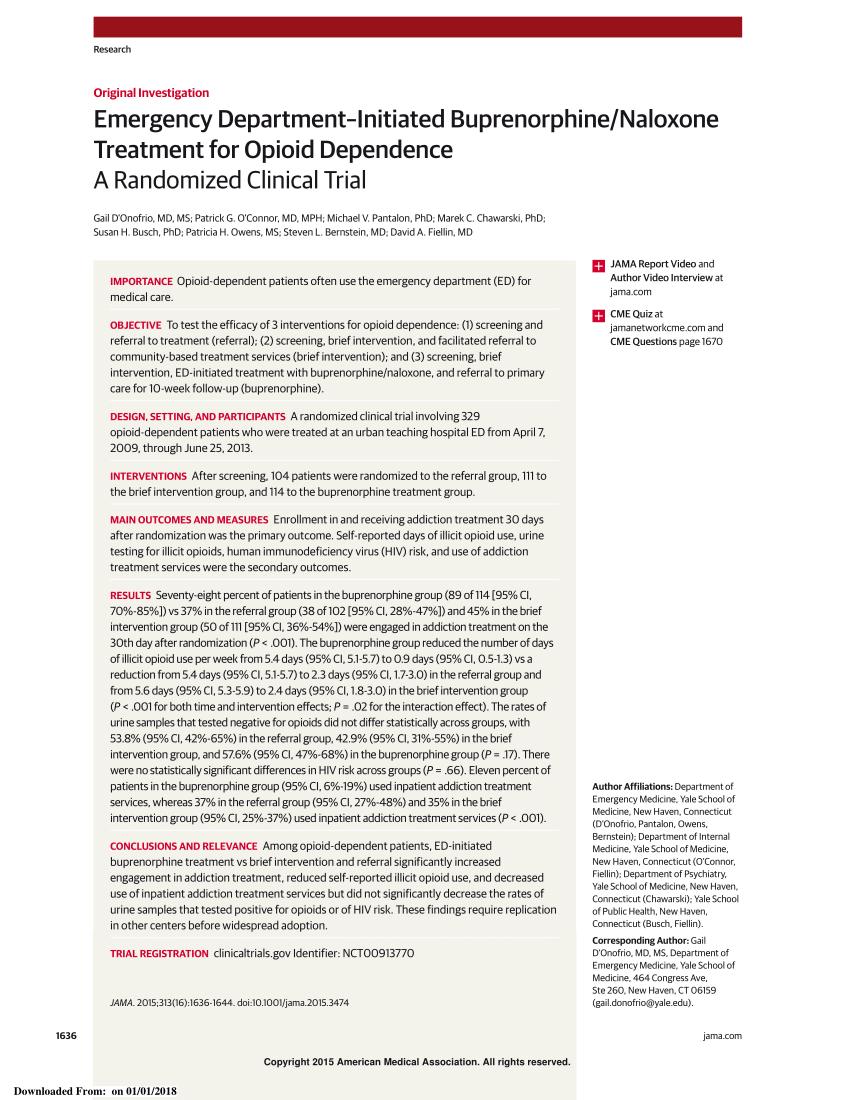Headline
Emergency department (ED)-initiated buprenorphine for opioid-dependent patients demonstrated significantly higher rates of addiction treatment engagement than interventions without buprenorphine.
Context
People with opioid use disorder (OUD) are increasingly presenting in EDs because of overdose, other adverse health effects, or other medical and psychiatric co-morbidities. Medications for OUD, including buprenorphine, are effective at reducing opioid withdrawal, cravings, and opioid use. This randomized controlled trial tests the efficacy of three interventions for patients presenting in EDs with opioid dependence: (1) screening and referral to treatment; (2) screening, brief intervention and facilitated referral, and (3) screening, brief intervention, ED-initiated treatment with buprenorphine/naloxone, and referral to primary care.
Findings
Patients who received buprenorphine had significantly higher rates of engagement in formal addiction treatment 30 days after the intervention than patients who received only referral or brief intervention (78% vs. 37% vs. 45%). Patients who received buprenorphine also had reduced self-reported illicit opioid use and decreased use of inpatient addiction treatment services. However, these patients did not show significantly decreased rates of positive urine testing for opioids or HIV risks.
Takeaways
ED-initiated buprenorphine treatment (with follow-up care) can be explored as a potential standard of care in EDs, similar to other chronic and relapsing medical conditions (such as diabetes) for which medication initiation is a standard ED practice. Given that patients in the buprenorphine group were less likely to be enrolled in inpatient addiction treatment in their follow-up care, provider organizations can also explore the potential downstream cost savings for applying this intervention in EDs.



